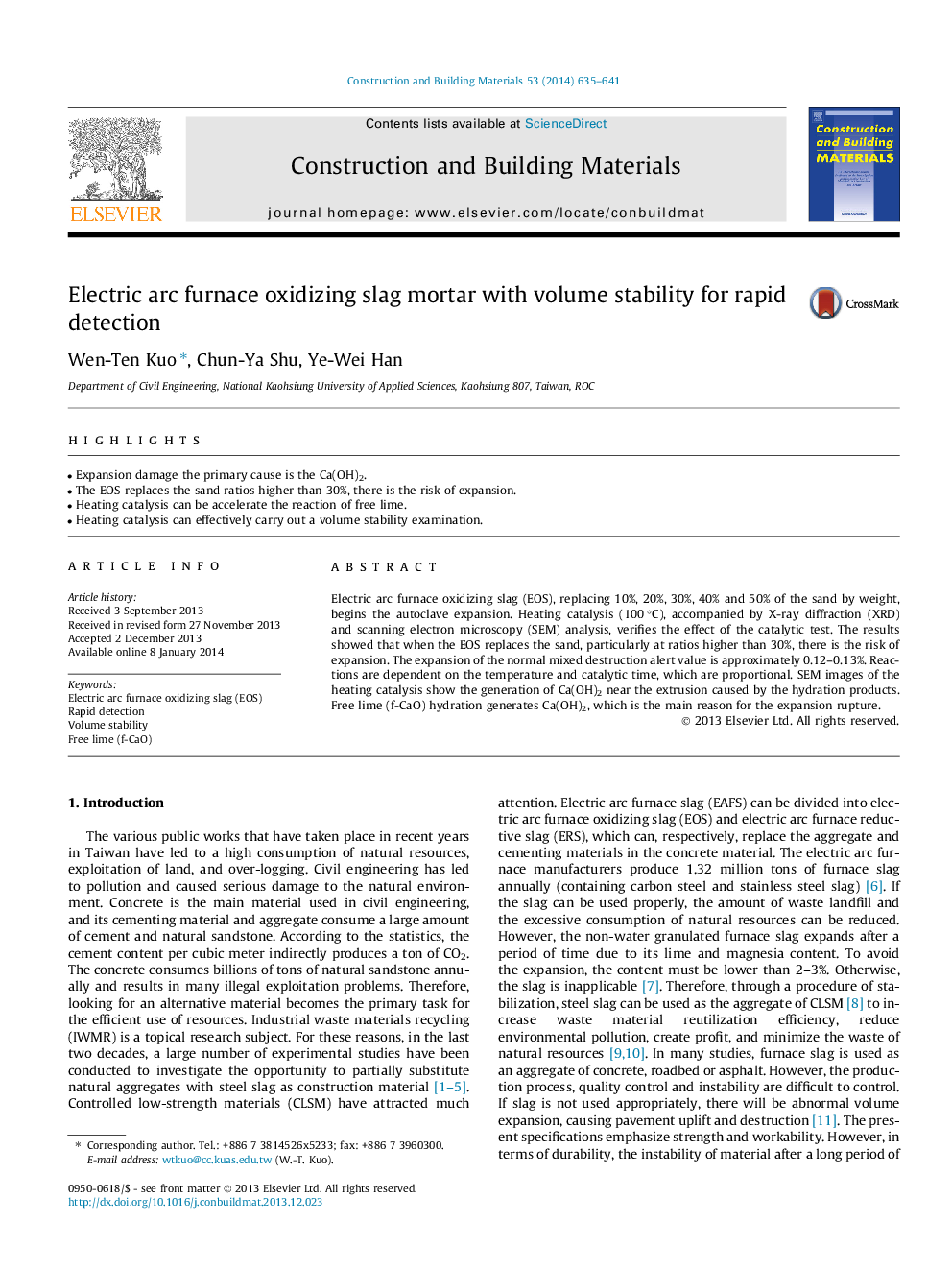| Article ID | Journal | Published Year | Pages | File Type |
|---|---|---|---|---|
| 257792 | Construction and Building Materials | 2014 | 7 Pages |
•Expansion damage the primary cause is the Ca(OH)2.•The EOS replaces the sand ratios higher than 30%, there is the risk of expansion.•Heating catalysis can be accelerate the reaction of free lime.•Heating catalysis can effectively carry out a volume stability examination.
Electric arc furnace oxidizing slag (EOS), replacing 10%, 20%, 30%, 40% and 50% of the sand by weight, begins the autoclave expansion. Heating catalysis (100 °C), accompanied by X-ray diffraction (XRD) and scanning electron microscopy (SEM) analysis, verifies the effect of the catalytic test. The results showed that when the EOS replaces the sand, particularly at ratios higher than 30%, there is the risk of expansion. The expansion of the normal mixed destruction alert value is approximately 0.12–0.13%. Reactions are dependent on the temperature and catalytic time, which are proportional. SEM images of the heating catalysis show the generation of Ca(OH)2 near the extrusion caused by the hydration products. Free lime (f-CaO) hydration generates Ca(OH)2, which is the main reason for the expansion rupture.
